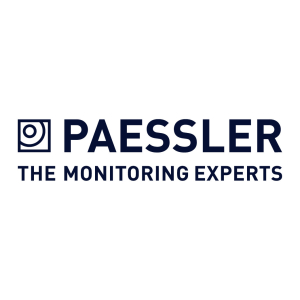What is our primary use case?
Monitoring of all our disparate sites through a central console is our primary use case.
How has it helped my organization?
The historical data provided by the solution helps to optimize network performance because it gives us trends. We can look at what we're using, what our peaks are, what our lows are, to know if we can downsize our links or if we need to scale-up in the future. It gives us really good forecasting.
In addition, with the solution we're proactive now, we're not reactive. We used to wait for the users to call us with an issue. Now we have complete warning thresholds so we can fix issues before they become issues. Our users perceive it as our being able to provide a very high level of service because we're avoiding situations where they suffer downtime. It's definitely made our infrastructure more reliable from a user's perspective.
It also enables our IT department to be more cost-effective because we're not doing as much hands-on monitoring. We're able to let the system monitor things for us so we can focus on other things. We're getting more value out of our techies.
Finally, it provides us with needed feedback on our IT infrastructure. We can look at individual devices or solutions and see if we're getting throughput, and how to utilize the hours. And that informs our buying decisions. It gives us a perspective from every angle.
What is most valuable?
Speed of deployment is one of the most valuable features. It's really quick to install. You can also scan whole subnets or different networks and it comes back with a full scan of what you've got on your network.
It allows you to do different verticals. There are different ways you can monitor things with custom sensor probes. It's really adaptable to your environment.
The solutions sensors and remote probes are very good, quite thorough.
My overall impression of the solution's feature set is that it's a great product, especially the mobile app. I'm on call and I get push notifications, so it gives me a heads-up before there are any issues that get reported to me by users. It's all good.
What needs improvement?
The Desktop app is good but it can be really sluggish at times, especially when you're editing different elements. If they could speed up the way you maneuver around different OUs that would be really good. The map creator is quick blocky. It's not very user-friendly.
Also, when doing an auto-discovery, I wish that there were an approval stage. If you pick "full detail scan", it comes back with everything, and then you have to go back and delete them bit by bit. If there were an approval saying, "These are ones that are available," you just go click, click, click and be done. That would be great.
What do I think about the stability of the solution?
It's rock solid. We've had zero downtime with PRTG.
What do I think about the scalability of the solution?
It's hard for me to talk about its scalability. We've got the basics, the 2,500 sensors, and that's what we use. It's fine. It has grown with our business but we've only grown marginally.
How are customer service and support?
We haven't had to use technical support.
Which solution did I use previously and why did I switch?
We previously used various open-source options like Nagios. They were quite limited and required specific agents being installed on all the hosts. They were slow to roll out. PRTG was a completely different ballgame. It was click and go. It was great.
How was the initial setup?
The setup was super-easy. It was a simple click-and-go install, give it your basic SNMP strings and your subnet ranges, and away it goes. It took less than an hour from the time I set up the solution until it provided feedback on the IT infrastructure. It's really quick.
What about the implementation team?
I did the deployment myself.
What was our ROI?
It's hard to answer definitively, but I would say it has saved money because it has avoided system downtime by enabling us to be proactive.
Which other solutions did I evaluate?
We had previous experience with things like HP OpenView, but it's been many years now. Our experience with it was that it was quite sluggish, very expensive. PRTG seemed to be at a very attractive price point, and its speed and the reviews we'd seen about it were really compelling.
What other advice do I have?
Give the demo a go. You'll find it super-quick and you'll love the benefits of it.
I would rate the solution a ten out of ten. It's super-easy and cost-effective.
*Disclosure: PeerSpot contacted the reviewer to collect the review and to validate authenticity. The reviewer was referred by the vendor, but the review is not subject to editing or approval by the vendor.






